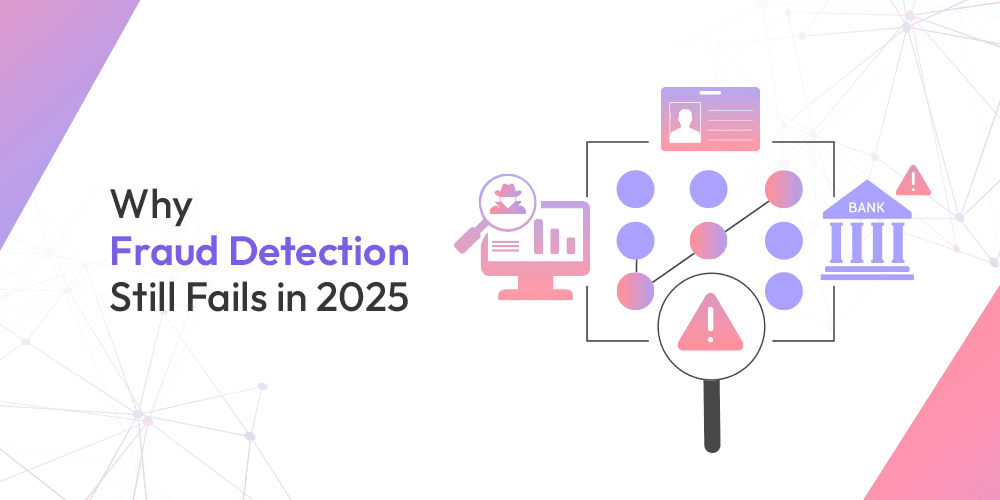
Why Fraud Detection Still Fails in 2025
RaptorX.ai
Thursday, August 28, 2025
Introduction: The Illusion of Progress
Despite rapid advances in financial technology, fraud detection in 2025 continues to lag behind the very threats it was designed to stop. Banks and payment providers deploy increasingly sophisticated systems, yet fraudsters still find ways to exploit gaps. The disconnect lies in how financial crime has evolved faster, more networked, and more adaptive, while detection frameworks have struggled to keep pace.
The reality is simple: fraud is not an isolated event, but an interconnected ecosystem of signals. Until institutions adjust to that truth, failures will persist.
The Shifting Face of Financial Crime
Synthetic Identities: Fraud That Looks Real
Fraudsters no longer rely solely on stolen credentials. Instead, they build synthetic identity combinations of real and fabricated data to create legitimate-looking customer profiles. These accounts pass standard checks but are designed for laundering or high-value fraud once established.
Mule Rings: Hidden in Plain Sight
A single mule account may appear harmless. But a mule ring, with dozens or even hundreds of accounts linked across devices and geographies, becomes the backbone of money laundering. Individually, these accounts mimic normal customers; collectively, their behavioral patterns reveal intent.
Real-Time Payments: Speed as a Weapon
The rise of real-time payment (RTP) systems has compressed the window for intervention from days to seconds. While consumers benefit from instant transfers, fraudsters exploit the same speed to move money across multiple hops before detection can catch up.
Why Detection Breaks Down
Rule Fatigue and Alert Overload
Many detection models still operate on static thresholds, generating a flood of alerts whenever activity crosses pre-set parameters. The result is rule fatigue, with compliance teams drowning in false positives, often exceeding 60-70% of all cases. Critical signals get buried under noise.
Fragmented Monitoring and Limited Context
Fraud is monitored in silos, separating RTP, card payments, online banking, and cross-border activity. This lack of connected intelligence blinds institutions to the network view of fraud, where coordination only emerges once signals are combined.
Lack of Signal Clarity
The core issue is signal clarity. Genuine fraud patterns are subtle and complex. Without tools that can separate noise from intent, systems keep missing the signals that matter most: multi-hop laundering chains, abnormal network linkages, or sudden shifts in behavior.
Where Detection Must Evolve
Graph and Network Intelligence
Fraud must be seen as relationships, not transactions. Graph-based views connect accounts, devices, and payment flows, revealing mule rings and fraud rings that would otherwise remain hidden.
Pattern, Behavior, and Intent Analysis
Beyond numbers and thresholds, detection must focus on:
- Patterns: unusual transaction topologies or multi-hop layering.
- Behavior: deviations from normal account or customer activity.
- Intent: why transactions are occurring, not just what they are.
Adaptive, Agentic Intelligence
Detection cannot remain static. Agentic AI introduces continuous exploration, real-time monitoring, and adaptive thresholds that evolve with changing fraud tactics. It not only surfaces risk but explains it clearly, giving analysts the context needed to act.
The Path Forward
Fraud detection fails in 2025 not because institutions lack effort, but because they lack connected, real-time clarity. Synthetic IDs, mule rings, and instant payments have fundamentally changed the landscape. Rules alone are no longer enough; the future lies in signal-driven intelligence that can uncover networks, behaviors, and intent before damage is done.
Financial crime will always evolve. But institutions that embrace clarity of signals, adaptive intelligence, and network-based detection will define the next standard of resilience.

